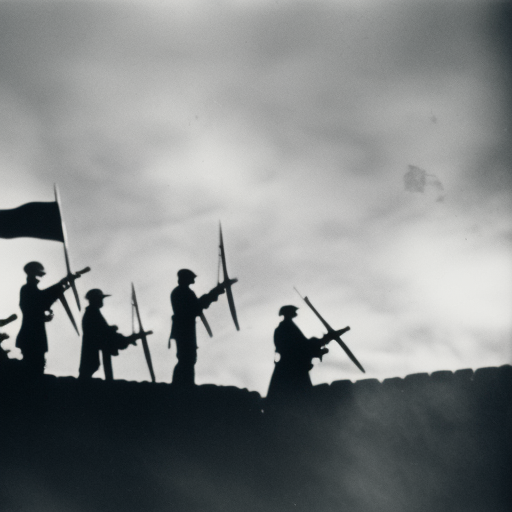Siege of Mafeking: A Test of Endurance during the Second Boer War
The Siege of Mafeking was a significant event that took place during the Second Boer War, lasting from October 1899 to May 1900. It was a protracted siege in which British forces defended the town of Mafeking against the Boer forces of the South African Republic and the Orange Free State.
The Background
The Second Boer War erupted in 1899 when tensions between the British Empire and the Boer states in South Africa escalated. The Boers, descendants of Dutch settlers, sought to maintain their independence and resist British control. The British, on the other hand, aimed to assert their dominance over the region and its valuable resources, such as gold and diamonds.
The Siege Begins
The Siege of Mafeking began on October 13, 1899, when Boer forces surrounded the town, cutting off its communication and supply lines. Mafeking, located in present-day South Africa, was a strategic railway junction and an important supply route for the British. The Boers hoped that by capturing Mafeking, they could disrupt British operations and gain a significant advantage in the war.
Leadership and Defense
The defense of Mafeking was led by Colonel Robert Baden-Powell, a British Army officer who had gained fame as the founder of the Boy Scouts. Under his leadership, the defenders of Mafeking implemented a series of defensive measures, including constructing trenches, fortifying buildings, and setting up barbed wire barriers.
Conditions during the Siege
Life inside the besieged town was challenging. Food and supplies quickly became scarce, and the defenders had to ration their resources. The Boers bombarded the town with artillery fire, causing damage to buildings and creating a constant threat to the inhabitants. Despite these difficulties, the defenders remained resilient and resourceful.
British Attempts to Break the Siege
Throughout the siege, the British made several attempts to break through the Boer lines and relieve the town. These efforts included a series of unsuccessful assaults and sorties, as well as attempts to send reinforcements and supplies by rail. However, the Boers maintained a strong defensive position and repelled these attempts.
The Siege is Lifted
After 217 days of siege, the relief of Mafeking finally came on May 17, 1900. A British force under the command of Colonel Mahon broke through the Boer lines and reached the town. The news of the relief of Mafeking was met with great celebration in Britain, boosting morale and becoming a symbol of British resilience and determination.
Legacy of the Siege
The Siege of Mafeking had a significant impact on the course of the Second Boer War. Although the relief of Mafeking did not immediately lead to a British victory, it boosted British morale and demonstrated the resilience of their forces. The siege also brought international attention to the conflict, with newspapers around the world reporting on the endurance and resourcefulness of the defenders.
Conclusion
The Siege of Mafeking was a prolonged and challenging test of endurance for the defenders. Despite being outnumbered and cut off from the outside world, the British forces in Mafeking held out for 217 days until they were finally relieved. The siege became a symbol of British determination and resilience, leaving a lasting legacy in the history of the Second Boer War.












